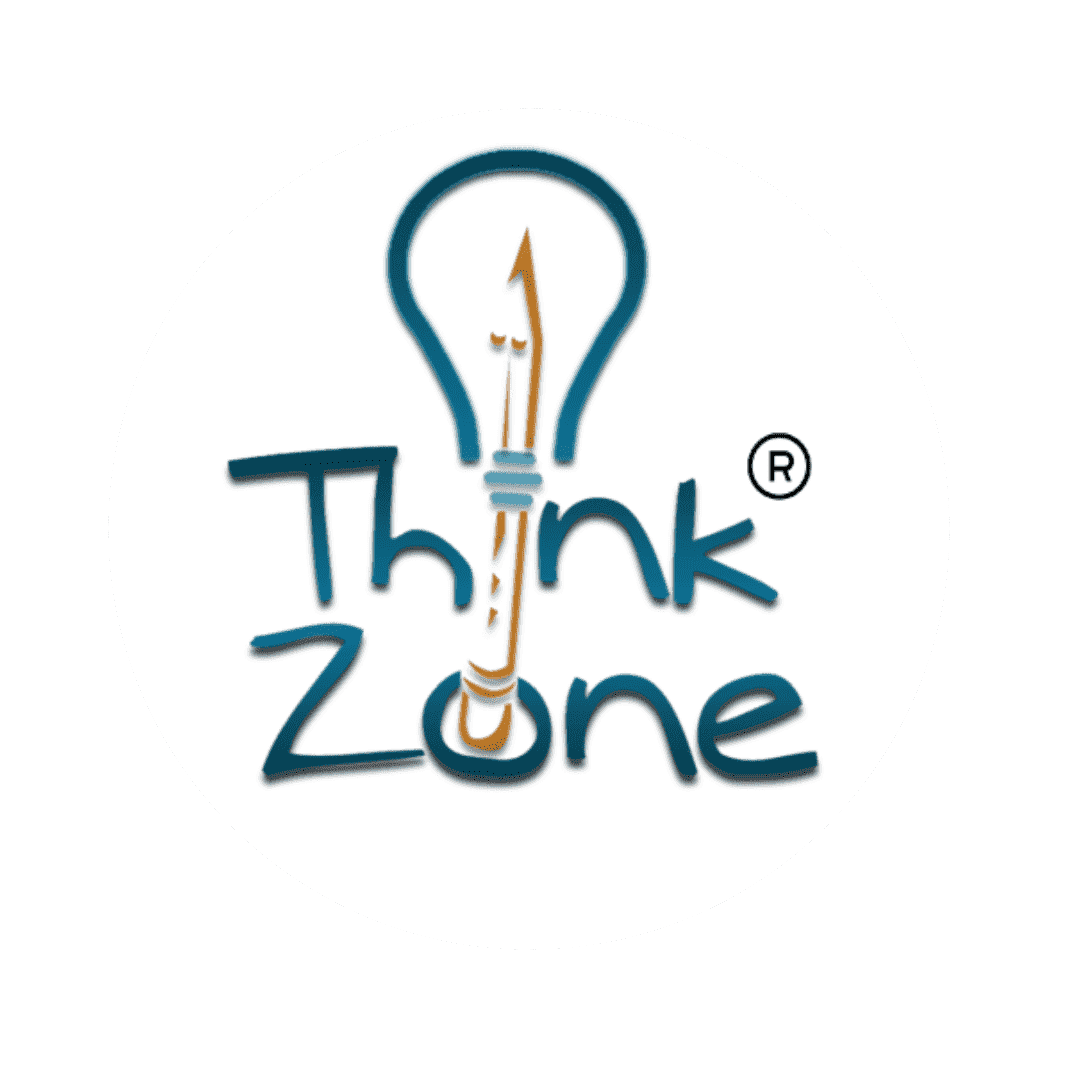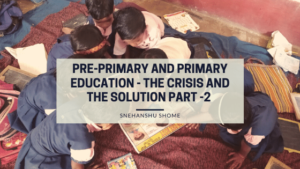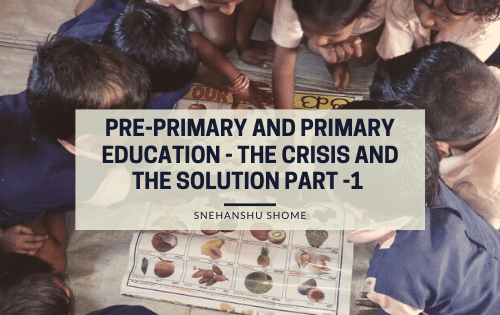The New Educational Policy and the challenges ahead
Most of us, who had read the Draft National Educational Policy 2019 already knew of the storm that was about to come if this policy would have been implemented. The fact that either the national policy on education or the national curriculum framework can be such a good critique of the existing education system and critically assess the situation before making any point is a relief. There is no denying that this reform was much needed. The existing system was set up years before and required a new modern outlook, looking at the situation on the ground and the advancement of the world.
As people working in the education sector, we all understand to some extent the ground realities of education and the amount of effort it takes to make a change in just the perception of people towards education let alone the system as a whole. The reforms brought in by the new policy are so bold that each and every line would be a headline on the news for quite some time now. The reforms are as bold as much they would be difficult to implement. And yet it would be a challenge that would be necessary to take up. Being in an organization that works towards working towards not one but every stakeholder in education, we can not shy away from bringing in the big change. Aren’t we all hoping things get better one day, why not then today? Our work now should increase tenfold, it should be now on doing what we do but also ensuring the big changes happen and helping the government in implementing it.
I will like to bring attention to some of the headlines from this sensational New Educational Policy. The headlines would be more concerned about changes in pre-primary and primary education because that is where my expertise(if any) is.
- Universal Access to Early Childhood Care and Education
One of the highlights of even the draft national policy 2019 was the change in education policy for the age group of children in anganwadis and playschool. The concern till now was for proper nutrition and immunization to children so young. But over the years it has been proven and realized how important the age group 3-5 is for learning. It’s the age of maximum brain development and thus an intervention was very much required. Also informed by the policy is that a curriculum framework and policy for pre-primary education is soon to follow which is required to formalize and standardize what would be “taught” to children.
- Implementation Challenges:
Rural: We have been working with Anganwadis in three districts of Odisha. The biggest problem that Anganwadis face is the amount of importance they have among the community because of which the attendance of children is really poor. Parents don’t understand the importance of children attending institutions that are young and to them, the role of Anganwadis remains to provide food to children and maternal health. The challenge is to increase the enrollment because even now Anganwadis are completely free and still suffer from low turnout.
Urban: High expectations of parents who send their children to playschools. Pre-Primary Education is meant to be a step to develop cognitive, physical, and language skills among many others. It is not meant to provide early competition to children so that they can start learning numbers and alphabets as fast as they can. Expectations give way to play schools that cater to this demand. Early childhood (3-5) is a fragile time for children and only proper implementation of the policy and child-centered pedagogy would help.
- 5+3+3+4 – The new system
I think this one thing could be a masterstroke. It resolves some of the implementation concerns of the above point – early childhood education. Just giving names and segregating gives more limelight to pre-primary education and how it is not just a statement but also a purpose. Even more phenomenal than the new system itself is the provision to give children the time to prepare between different levels.
Implementation Challenges
The major challenge would be in rural areas where the new system would have to bring anganwadis and schools together which are two different entities right now.
Anganwadi workers have a list of responsibilities which include maternal healthcare, surveys, providing meals to children. Anganwadi workers are not devoid of the knowledge of pre-primary education, they attend training sessions and are provided with materials regularly for the same. The implementation is however difficult considering the amount of work they have. This is going to remain challenging even after the new policy.
The provision to prepare between different levels needs to be standardized nor they would just become extra classes for children that already happen and do not add much value.
- Focus on Foundational Literacy and Numeracy (FLN)
A much-misunderstood concept is that children need to be spoon-fed a lot of information. The reality is that learning is not that difficult once a child can read and comprehend on their own. Over the years we have been trying to spoon-fed children with a year-long curriculum to children which they end up mugging up before exams. Our focus needs to be on providing children Foundational Literacy and Numeracy so that they can do the rest of the work on their own. It is a popular belief that once children know how to read, write, comprehend, solve basic operations in mathematics, they can learn higher concepts. To that, the focus is rightly placed by the policy.
Implementation Challenges
Deciding on what foundational skills are! A reduction of the syllabus is not the answer to implementing foundational skills neither is teaching those specific things in the same way we have been already doing is going to work. Foundational skills need to be mapped, they need to be listed out and a proper pedagogy has to be in place to implement it.
- Medium of instruction
Probably the most debated points from the policy would be the medium of instruction. The policy puts the medium of instruction as to regional language till class 5 and promotes it for further higher classes. Not weighing into any one side of the debate, I see both the merits and demerits of it. The merits being children not feeling left out in areas where English is still a much foreign language and the conservation of regional languages felt by many across. The demerits begin for English medium schools who have set themselves as a standard for education across India and in metropolitan cities where the English-speaking youth has become parents and thus they would want their children to learn the same.
Implementation Challenges
Probably winning the debate
What are regional languages in general! In Odisha, where I work, the language takes different forms in different places. The tribal population has its own language, which is a lot different from mainstream Odia. How would we make contextual textbooks and study materials in that situation?
Obviously, not everyone can be happy but how do you enforce it? Would the mixed language population of Mumbai start learning Marathi?
- Digitalizing schools, revised curriculum, and vocational educations
Most of these have been in the pipeline for a long and I hope it does not reduce to being just mere mentions in the policy
Implementation Challenges
Through various programs, the government has tried several times to achieve this. The question is what is going to be different this time?
- Increasing choices for children in secondary and higher education
Much of the changes that have been made in systems of secondary and higher education, even to some extent in primary and secondary education, I think is a good step towards imbibing the values of democracy in Education. National Curriculum Framework 2005 a document far ahead of its time stresses it many times on several chapters. I believe democracy is not just a concept that can be taught to anybody, it is an emotion that can be felt, when your voices are represented from a young age.
That brings my last concern with the implementation of any new curriculum or policy. National Curriculum Framework brings out wisdom- we provide a lot of information to children thinking that they don’t know enough, but they do, children learn from the environment the minute they take birth. They learn and know how to make their own decisions. Indian Parents and educators have long taken that control away from children. The choice to decide what we want to learn and what should be compulsory in education should be completely children’s choice only moderately regulated by any authority.
The changes in the policy should reach to ‘children’ and schools should understand the importance of that happening. The primary motive is for children to learn and not to score good marks. This is the reason why I mentioned in the primary paragraph, our roles have increased tenfold because it is not the government who would make the final change, it would be us. We need to lose the moral authority over children and provide them with a better understanding of what education means.


